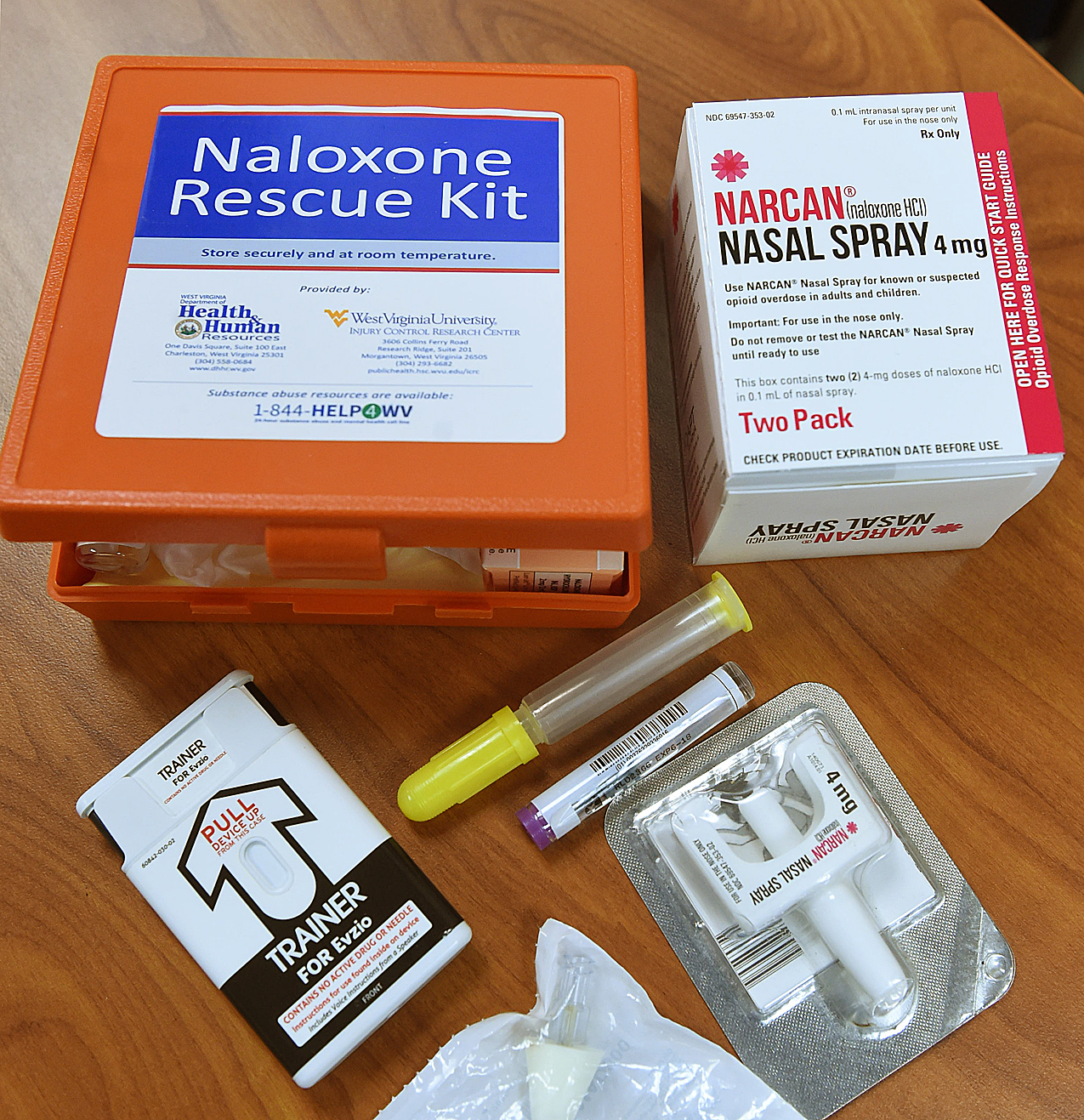Newsroom@DominionPost.com
Sam Shawish used substances and got clean a few times, once for more than two years. But a little over a year ago, on Sept. 4, 2020, six months into the COVID-19 pandemic, “I had some things happen to me, and I made the decision to use again.”
After Shawish missed a work meeting and also an appointment to give a client a ride, Russell Wyatt, a peer recovery coach with West Virginia Sober Living, went to Shawish’s apartment and found him unresponsive, with shallow breathing. It’s estimated that he had been out for quite a while and was in cardiac arrest.
Wyatt, who is also a member of the Monongalia County Quick Response Team, put his training into action, giving Shawish two 4-mg naloxone doses three minutes apart.
Naloxone reverses the effects of an opioid overdose by kicking opioid molecules off brain receptors.
Wyatt had already called 911, and soon, Jason D. Morgan, a Monongalia County sheriff’s deputy and a fellow QRT member, showed up and gave Shawish additional doses, as did paramedics.
Shawish’s breathing improved although he did not wake up, and he was taken to the hospital.
When he finally came to, Shawish, now 28, had additional challenges.
“My brain was impacted, and I had to rebuild my function,” he said. “I had issues making a sandwich.” He also had to re-learn how to use his legs.
For someone who had struggled with substance use disorder, this added extra layers to Shawish’s fight for life.
“I actually couldn’t see myself restarting it,” he said of working toward recovery again. “I had done it so many times. And all of those things hitting me at one time, it was overwhelming.”
Because of his lengthy hospital stay, he was no longer physically dependent on the drugs. “The decision to make the choice to dust myself off or just tap out was totally mine.”
He chose to work a 12-step program, completing inpatient rehabilitation at Jacob’s Ladder treatment facility in Aurora in Preston County, undergoing intensive outpatient therapy and allowing himself to ask for help and not remain isolated.
More than a year later, Shawish works at Valley HealthCare System as a recovery coach.
And Saturday, he will be one of the volunteers working with QRT members to teach naloxone administration to anyone who wants it. Save a Life Day is set for 10 a.m.-5 p.m. at 13 different locations in Monongalia County.
“It’s been great to see Sam make a comeback and for him to have naloxone available to him to give him an opportunity at another chance to recover,” said Wyatt, who has been coordinating volunteers and sponsors for the event.
“As far as Save a Life Day, this is a perfect example of why we need to carry naloxone and use it and have it in the hands of the general public along with individuals with substance use disorder.”
There are other examples of when having naloxone and knowing how to administer it is important, Wyatt said.
“We’ve seen situations in which children get into a medicine cabinet or their parents’ stash, or when people with memory issues have trouble with their prescription dosages,” he said.
“As an example, my 18-year-old son was experimenting with what he thought was cocaine for the first time. It ended up being fentanyl,” Wyatt said.
Fentanyl is a synthetic drug that is more powerful than other substances and often takes individuals by surprise when it’s surreptitiously added to or substituted for something else.
Wyatt’s son overdosed and was rushed to the emergency department. “If it weren’t for naloxone, my son wouldn’t be here anymore.”
Save a Life Day locations include five McDonald’s restaurants in Morgantown: Sabraton, Westover, Star City, Pierpont, Suncrest Towne Centre; the WVU Mountainlair Green and the WVU Student Rec Center; Morgantown Farmers Market Pavilion; Pierpont Landing Pharmacy; Star City Fire & EMS; the 7-Eleven on Mason-Dixon Highway in Blacksville; Woodland United Methodist Church on the Mileground and Mount Pleasant United Methodist Church on Kingwood Pike.
Participants can walk up to a table at any of these locations to receive the training.
Naloxone is applied in the nasal passages as a nose spray and is easy for anyone to administer. Naloxone training has been a key component of the Monongalia County QRT, which formed in the spring of 2019.
During Save a Life Day, participants will not only receive the five-to-seven-minute naloxone training, but will also be sent home with two 2-mg doses so they will be able to respond to real-life situations.
And a year later, Shawish is living proof that someone who does recover can then assist others.
“Today, I sponsor people again,” he said. “I’ve gone from being somebody who couldn’t stop using for six hours at a time to over a year of sobriety. I couldn’t have done it without the support.”
TWEET @DominionPostWV




